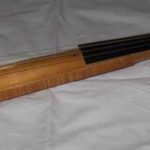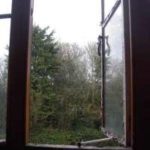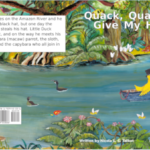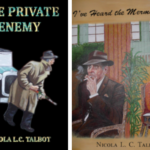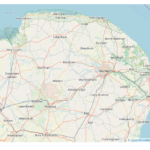Dickimaw Books Blog: October 2019
16 posts found. Showing 1–16.
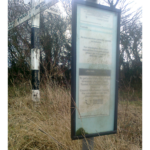 There are some interesting little curiosities in our village and the surrounding area, such as the Foxhole bus stop at the end of Long Lane that has “No bus services currently operate in this area” displayed on it."
There are some interesting little curiosities in our village and the surrounding area, such as the Foxhole bus stop at the end of Long Lane that has “No bus services currently operate in this area” displayed on it." When I was a child, my family used to go out for walks at the weekend, usually after Sunday lunch. Seaford Head, Hope Gap, the Cuckmere, Friston Forest and on the other side towards Newhaven, the Tide Mills."
When I was a child, my family used to go out for walks at the weekend, usually after Sunday lunch. Seaford Head, Hope Gap, the Cuckmere, Friston Forest and on the other side towards Newhaven, the Tide Mills." This is the story of how I came to write the book given that my primary emphasis has been on writing text books and adult crime/thriller/speculative fiction rather than children’s books.
This is the story of how I came to write the book given that my primary emphasis has been on writing text books and adult crime/thriller/speculative fiction rather than children’s books. 2019-10-10 📂 Children’s Illustrated Fiction Creative Writing 🔖 Re-published Story creation The Foolish Hedgehog
I’ve been wondering what’s my all-time favourite book. My tastes have changed over the years.
Living languages have an interesting fluidity. They evolve with the people who continually use them.
Exploring the South Norfolk countryside. I’m not lost, honest!
Writing a first draft is hard.
The problem with the twenty-first century is that when technology fails we can be in a worse state than we might’ve been in when that technology didn’t exist or only existed in a primitive state.
Novel beginnings are hard to write.
Where do you get your imagination from?
2019-10-25 📂 Creative Writing 🔖 Conservation of Detail Re-published Story creation The Private Enemy
2019-10-25 📂 Children’s Illustrated Fiction Creative Writing 🔖 Quack, Quack, Quack. Give My Hat Back! Re-published Story creation
2019-10-28 📂 Crime Fiction Speculative Fiction 🔖 I’ve Heard the Mermaid Sing Re-published The Fourth Protectorate The Private Enemy
2019-10-29 📂 Creative Writing Crime Fiction Speculative Fiction Language Norfolk 🔖 Dialect Re-published Story creation The Private Enemy
The Fourth Protectorate is an alternative history novel where the principle point of departure is the Brighton bomb in 1984.
Search Blog
📂 Categories
- Autism
- Books
- Children’s Illustrated Fiction
- Illustrated fiction for young children: The Foolish Hedgehog and Quack, Quack, Quack. Give My Hat Back!
- Creative Writing
- The art of writing fiction, inspiration and themes.
- Crime Fiction
- The crime fiction category covers the crime novels The Private Enemy and The Fourth Protectorate and also the crime short stories I’ve Heard the Mermaid Sing and I’ve Heard the Mermaid Sing.
- Fiction
- Fiction books and other stories.
- Language
- Natural languages including regional dialects.
- (La)TeX
- The TeX typesetting system in general or the LaTeX format in particular.
- Music
- Norfolk
- This category is about the county of Norfolk in East Anglia (the eastern bulgy bit of England). It’s where The Private Enemy is set and is also where the author lives.
- RISC OS
- An operating system created by Acorn Computers in the late 1980s and 1990s.
- Security
- Site
- Information about the Dickimaw Books site.
- Speculative Fiction
- The speculative fiction category includes the novel The Private Enemy (set in the future), the alternative history novel The Fourth Protectorate, and the fantasy novel Muirgealia.
🔖 Tags
- Account
- Alternative History
- Sub-genre of speculative fiction, alternative history is “what if?” fiction.
- book samples
- Bots
- Conservation of Detail
- A part of the creative writing process, conservation of detail essentially means that only significant information should be added to a work of fiction.
- Cookies
- Information about the site cookies.
- Dialect
- Regional dialects, in particular the Norfolk dialect.
- Docker
- Education
- The education system.
- Ex-Cathedra
- A Norfolk-based writing group.
- Fantasy
- Sub-genre of speculative fiction involving magical elements.
- File formats
- Hippochette
- A pochette (pocket violin) with a hippo headpiece.
- History
- I’ve Heard the Mermaid Sing
- A crime fiction short story (available as an ebook) set in the late 1920s on the RMS Aquitania. See the story’s main page for further details.
- Inspirations
- The little things that inspired the author’s stories.
- Linux
- Migration
- Posts about the website migration.
- Muirgealia
- A fantasy novel. See the book’s main page for further details.
- News
- Notifications
- Online Store
- Posts about the Dickimaw Books store.
- Quack, Quack, Quack. Give My Hat Back!
- Information about the illustrated children’s book. See the book’s main page for further details.
- Re-published
- Articles that were previously published elsewhere and reproduced on this blog in order to collect them all together in one place.
- Sale
- Posts about sales that are running or are pending at the time of the post.
- Site settings
- Information about the site settings.
- Smile for the Camera
- A cybercrime short story about CCTV operator monitoring a store’s self-service tills who sees too much information.
- Story creation
- The process of creating stories.
- TeX Live
- The Briefcase
- A crime fiction short story (available as an ebook). See the story’s main page for further details.
- The Foolish Hedgehog
- Information about the illustrated children’s book. See the book’s main page for further details.
- The Fourth Protectorate
- Alternative history novel set in 1980s/90s London. See the book’s main page for further details.
- The Private Enemy
- A crime/speculative fiction novel set in a future Norfolk run by gangsters. See the book’s main page for further details.
- Unsocial Media
- A cybercrime fiction short story (available as an ebook). See the story’s main page for further details.
- World Book Day
- World Book Day (UK and Ireland) is an annual charity event held in the United Kingdom and the Republic of Ireland on the first Thursday in March. It’s a local version of the global UNESCO World Book Day.
- World Homeless Day
- World Homeless Day is marked every year on 10 October to draw attention to the needs of people experiencing homelessness.

